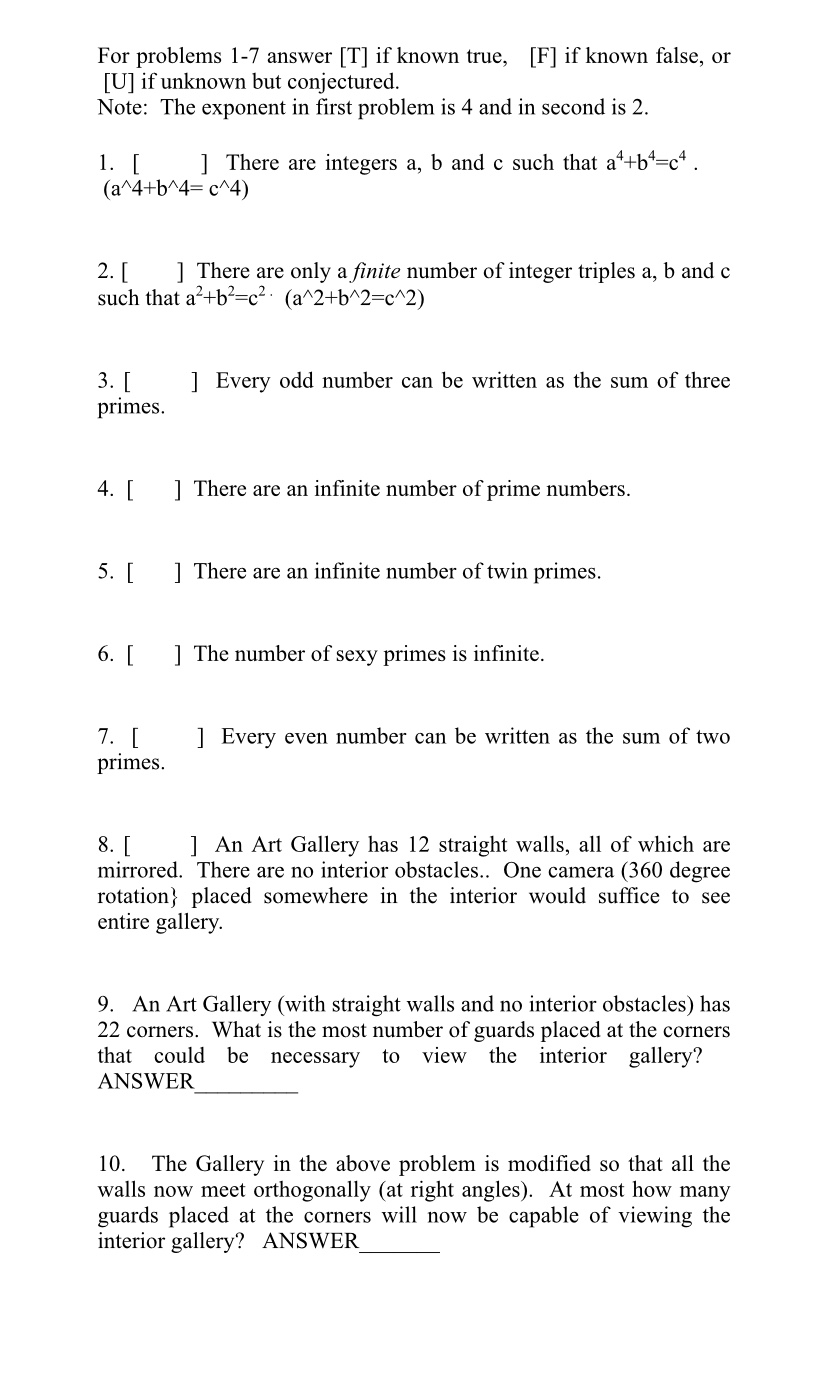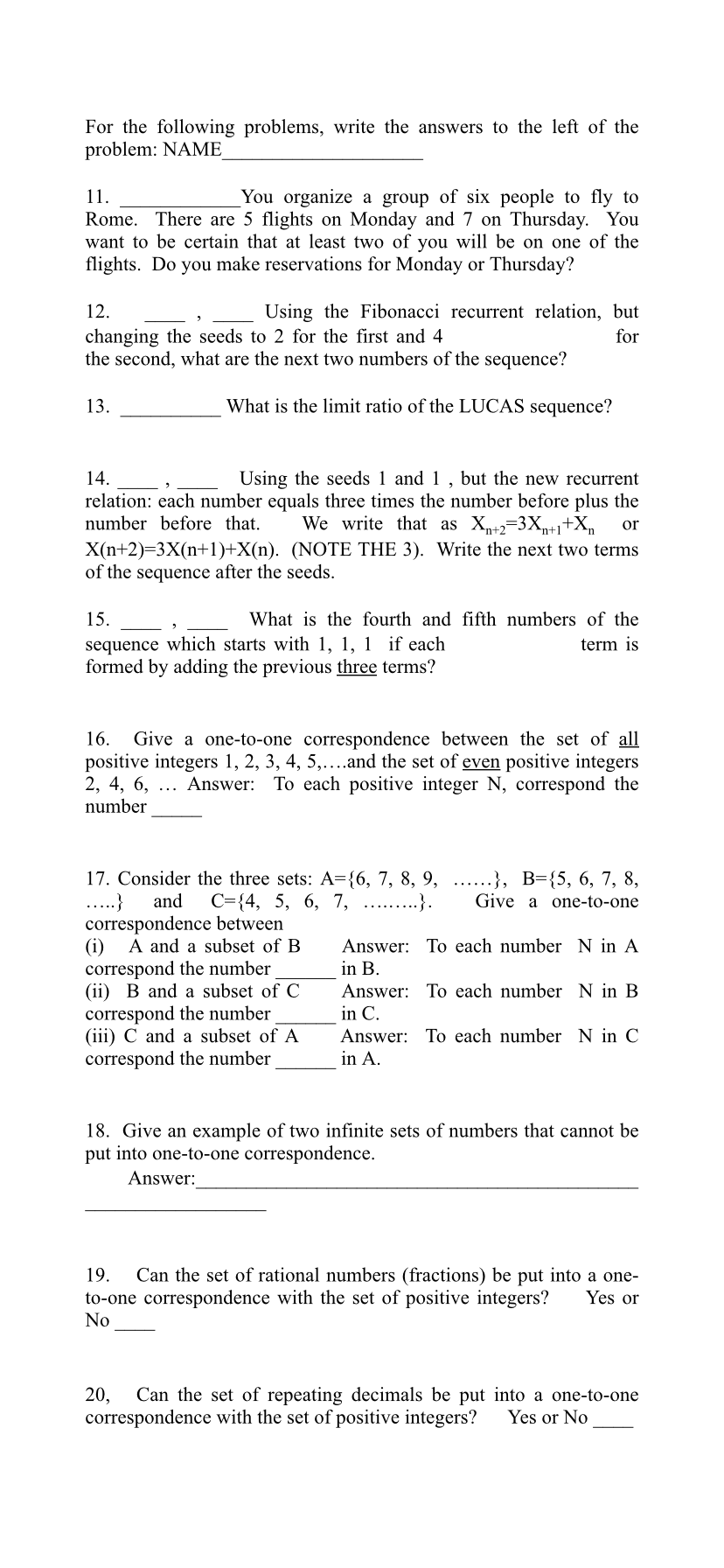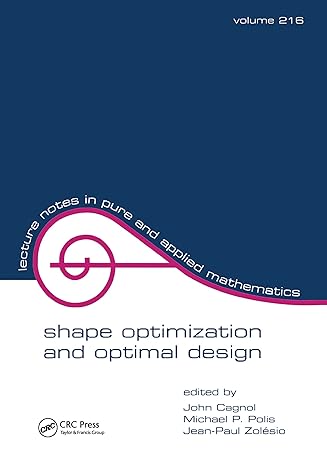Please answer
For problems 1-7 answer [T] if known true, [F] if known false, or [U] if unknown but conjectured. Note: The exponent in first problem is 4 and in second is 2. 1. [ There are integers a, b and c such that a +b4=c4. (a 4+b 4= c^4) 2. [ ] There are only a finite number of integer triples a, b and c such that a-+b2=c2. (a^2+b 2=c^2) 3. [ Every odd number can be written as the sum of three primes. 4. [ ] There are an infinite number of prime numbers. 5. [ ] There are an infinite number of twin primes. 6. [ ] The number of sexy primes is infinite. 7. [ Every even number can be written as the sum of two primes. 8. [ An Art Gallery has 12 straight walls, all of which are mirrored. There are no interior obstacles.. One camera (360 degree rotation} placed somewhere in the interior would suffice to see entire gallery. 9. An Art Gallery (with straight walls and no interior obstacles) has 22 corners. What is the most number of guards placed at the corners that could be necessary to view the interior gallery? ANSWER 10. The Gallery in the above problem is modified so that all the walls now meet orthogonally (at right angles). At most how many guards placed at the corners will now be capable of viewing the interior gallery? ANSWERFor the following problems, write the answers to the left of the problem: NAME 11. You organize a group of six people to y to Rome. There are 5 ights on Monday and 7 on Thursday. You want to be certain that at least two of you will be on one of the ights. Do you make reservations for Monday or Thursday? 12. , Using the Fibonacci recurrent relation, but changing the seeds to 2 for the rst and 4 for the second, what are the next two numbers of the sequence? 13. What is the limit ratio of the LUCAS sequence? 14. , Using the seeds 1 and 1,but the new recurrent relation: each number equals three times the number before plus the number before that We write that as X+2=3 Xntrl or X(n+2)=3X(n+l)+X(n). (NOTE THE 3). Write the next two terms of the sequence after the seeds. 15. , What is the fourth and fth numbers of the sequence which starts with l, 1, 1 if each term is formed by adding the previous three terms? 16. Give a oneto-one correspondence between the set of a_ll positive integers ], 2, 3, 4, 5,. . ..and the set of m positive integers 2, 4, 6, Answer: To each positive integer N, correspond the number 17. Consider the three sets: A={6, 7, 8, 9, ...... }, B={5, 6, 7, 8, ...} and C={4, 5, 6, 7, .........}. Give a one-toone correspondence between (i) A and a subset of B Answer: To each number N in A correspond the number in E. (ii) B and a subset of C Answer: To each number N in B correspond the number in C. (iii) C and a subset of A Answer: To each number N in C correspond the number in A. 18. Give an example of two innite sets of numbers that cannot be put into one-to-one correspondence. Answer: 19. Can the set of rational numbers (fractions) be put into a one- toone correspondence with the set of positive integers? Yes or No 20, Can the set of repeating decimals be put into a one-toone correspondence with the set of positive integers? Yes or No








